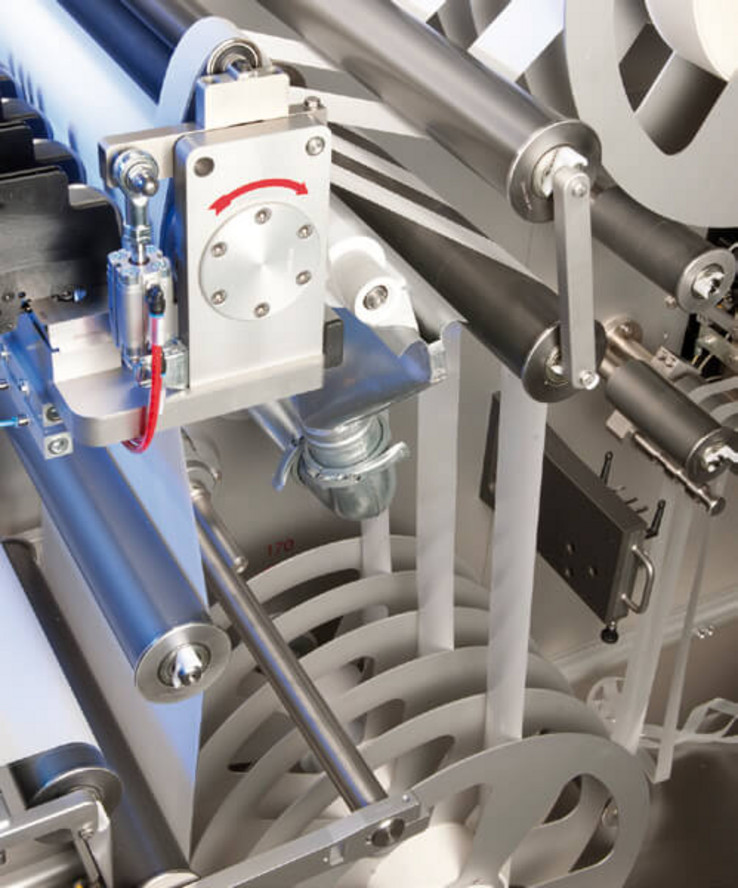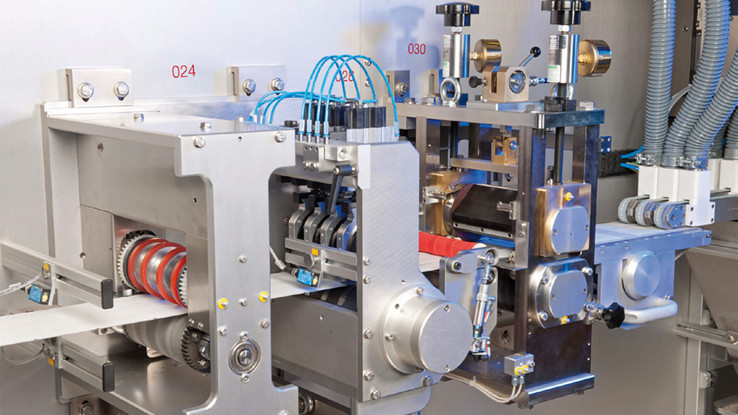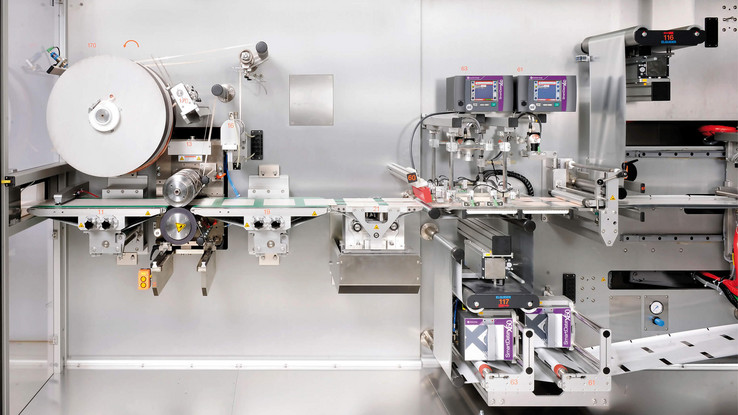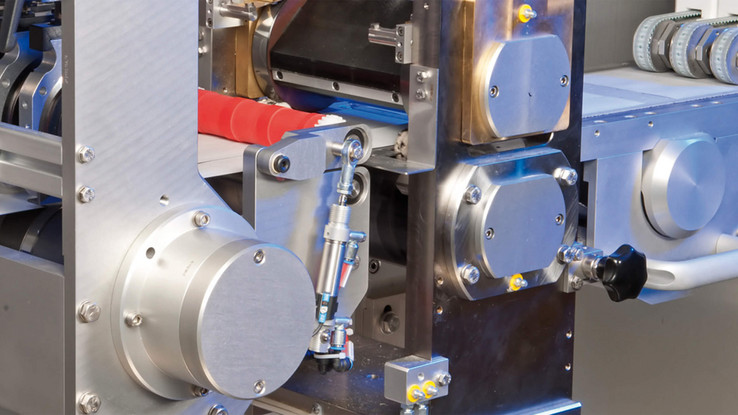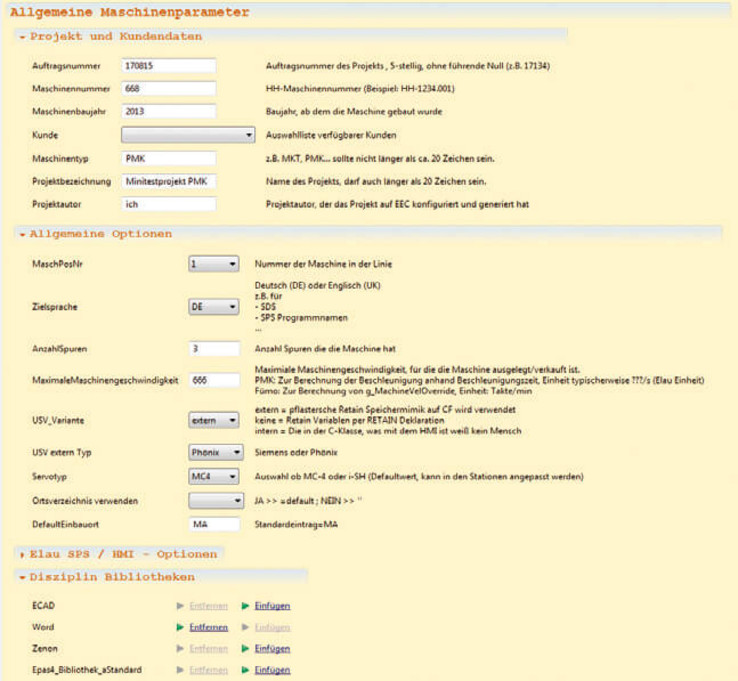Engineering of complex packaging machines optimised
When a product manufacturer decides to market a new product, they require a high-quality packaging solution tailored exactly to their needs as quickly as possible
When a product manufacturer decides to market a new product, they require a high-quality packaging solution tailored exactly to their needs as quickly as possible. The manufacturers react with the strategy of implementing as high a range of machines as possible with already developed, variable function modules to get to grips with cost calculation, short delivery time and quality.
Almost all market-leading packaging machine manufacturers have their head offices in Europe – including Harro Höfliger GmbH, whose core area is pharmaceutical and medical engineering. With over 700 employees, the company has an excellent reputation as a specialist for production and packaging systems for particularly sophisticated products. An export quota of almost 80 % documents that the machines and systems are in high demand even abroad.
Technology focuses
The portfolio of the company is divided into several technological sectors: among other things, the web and film converting is concerned with machines which manufacture and package adhesive plasters and bandages. Another technological sector develops and fabricates cartoning systems; along with these, assembly machines for medical products such as disposable syringes are fabricated as well. The last sector is powder technology. Here, Harro Höfliger develops solutions for dosing and packaging powder-based medicines such as inhalable insulin. Around 80 % of the machines built in Allmersbach are used in pharmaceutical and medical engineering.
Individual development
Harro Höfliger does not have a comprehensive development department that works independently of individual projects. Volker Scheub, Manager of control engineering states: „Since individual requirements must always be considered, there are no series machines for us. All developers work on customer projects.“ The software plays an ever greater role in this. More than 80 employees in all technological sectors are responsible for the programming of the machine controls.
Standardisation offers several advantages
Since the machines have recurring functions to perform despite the individual requirements, it was logical to search for possibilities of standardisation. Two aspects were at the forefront. Volker Scheub: „The developers are under great time pressure. They don‘t work for a new model series, but there is a customer waiting for their machine behind every project. Along with time-saving as a predominant goal, we also wanted to improve the quality.“
Configuration by system
Since the machines and their components are very strongly characterised by mechatronics, Harro Höfliger was on the lookout for a solution that supports the configuration of all mechatronic disciplines universally. Since Harro Höfliger wanted to avoid investing incalculable resources into the internal development of a configuration solution despite their high level of internal software expertise, the logical conclusion was to look for a solution on the market. The choice fell on the EPLAN Engineering Center (EEC). In the EEC, the functions of a machine are universally filed meaning that they can be configured for the individual characteristics of a customer-specific machine (functional engineering). For the creation of the concrete order-specific documents, each function contains the corresponding characteristics for the circuit diagram, the PLC software or the documentation. For the introduction of a universal mechatronic configuration solution, EPLAN recommends a step-by-step approach. The aim is to start with as small a defined expansion stage as possible, gaining initial successes quickly and then expanding the solution step-by-step.
Germ cell software development
Harro Höfliger began the introduction of the EEC with the configuration of the control software because the greatest potential for improvement was seen here. The project team designed the construction kit from the start in such a way that the basic functions can be used trans-technologically, i.e. for various types of machines. That works very well even though there are great differences between clocked machines and those that run continuously, for example. „This will help us to rectify any error which may occur and stop it from ever recurring“, says Volker Scheub. For this reason, individual controls today are almost completely generated from the construction kit. Uwe Koschorrek, Group leader of control engineering for web converting machines explains: „We are now generating the controls of our machines up to 99 % with the EEC“. Only special requests that have not yet been implemented, such as integration of an additional sensor, are being implemented in a conventional way – but also only at the first time: „Such additional functions are created directly as a new function module in the EEC.“ Even the time benefits are enormous. Uwe Koschorrek: „With a plaster machine, for example, we are saving 150 to 250 construction hours.“ The quality is improving at the same time because the constructors can always resort to tested programming modules, which are available at virtually the press of a button. Time is even saved in commissioning. „We were able to reduce the time it takes for the electrical basic commissioning from an average of two weeks to just a few days," says Uwe Koschorrek.
Generation of the documents
Due to these initial, very positive experiences, the decision was soon made to realise the next big potential: the very time-consuming creation of the machine-specific documents containing several hundred pages for the qualification, design specification and software documentation, which were requested by GAMP in the sector of medical engineering. This very structured and reproducible process is a competitive advantage not to be underestimated in the current customer communication of Harro Höfliger.
Optimisation of the electrical construction
In view of these effects achieved in the first two phases, it is not surprising that Harro Höfliger wanted to utilise the possibilities of the EEC even more comprehensively. This was true not only of the breadth of use in the company, i.e. the use of the construction kit for other technological sectors, but for other disciplines as well. So, in a third step, the company has integrated electrical construction with EPLAN Electric P8 into the EEC. Solution provider EPLAN has supported Harro Höfliger here both in the area of modularisation of the circuit diagrams and in the configuration in an optimum way.
Real ease of work and time saving
Today, Harro Höfliger manages to generate the electric circuit diagrams, the control code and the documentation up to 100 % automatically with their cartoning machines. The configuration level for plaster machines is almost at 90 %. Volker Scheub points out: „For the start, a mastermind for the structuring is required. With this requirement, a construction kit with function units can be developed, which significantly increases productivity reserves, improves the time-to-market factor and also improves quality. Today, not one of my employees wishes to do without this internal, continuous improvement in engineering. It is only natural that we are already planning the next step, the creation of the human-machine interface for our visualisation system zenon from Copa-Data. There is great potential in the configuration of graphics and files here.“ Experience shows one thing very clearly: engineering processes for complex special machines are not optimised in one step. In fact, sustainable effects arise from a consistent, step-by-step optimisation with intensive involvement of all employees taking part.



